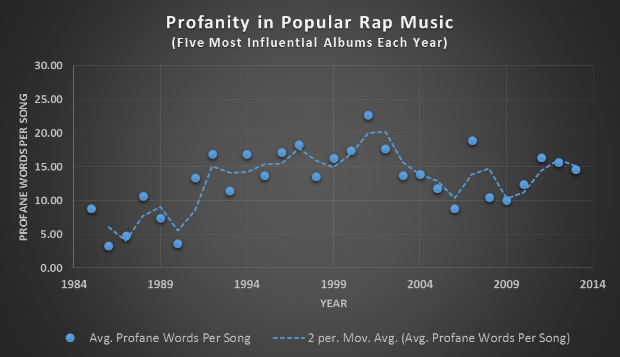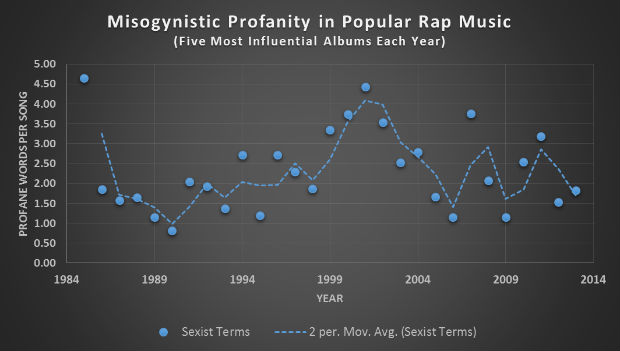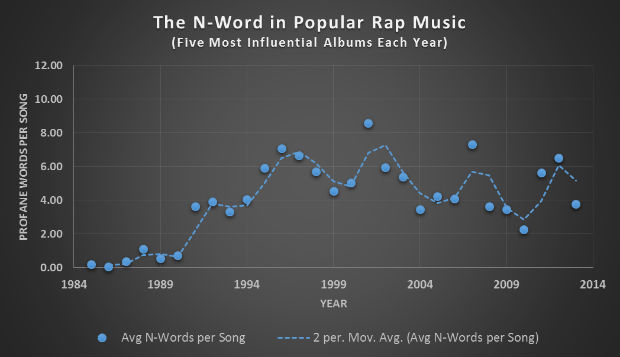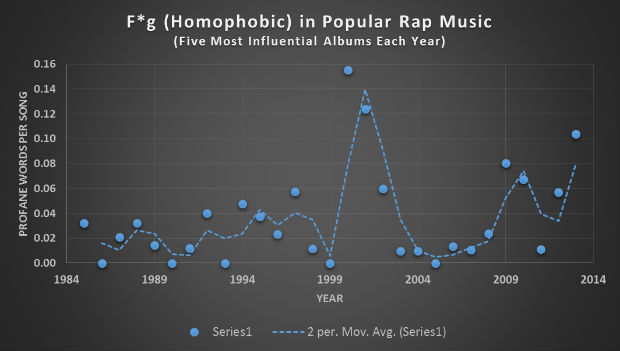Rap has a well-earned rep for having the profane lyricism, but just how many curse-words are on the most popular hip-hop albums? BestTickets.com’s new study, “The Best F*cking Article You’ll Read Today: Profanity in Rap Lyrics Since 1985,” has a bevy of answers.
First off, the critera: “We selected the five albums from each year that we deemed as the most influential or important. Total sales, artist name recognition, and album hit density all factored into our album choices. Ultimately though, it was our own perceived popularity of each album that determined if it made the cut.”
While there’s a lot of fun to be had in finding out the most profane artists, albums, and songs of all time, it’s also really interesting to see how cursing in hip-hop has evolved over the years. From 1990 to ’91, there’s a huge increase thanks in part to new releases by N.W.A. and Ice Cube, and rises overall throughout the decade, thanks to the genre’s growth as a whole.
Then comes 2001, rap’s dirtiest year. The albums selected: Ja Rule’s Pain is Love, Nas’ Stillmatic, Jay-Z’s The Blueprint, Tupac’s Until the End of Time, and Ludacris’ Word of Mouf. These five LPs combine for the highest rates of: standard curse words; misogynistic terms; and use of the so-called N-word. The only reason 2001 didn’t top the charts in homophobic lyrics is the fact that, you guessed it, Eminem’s The Marshall Mathers LP came out in 2000.
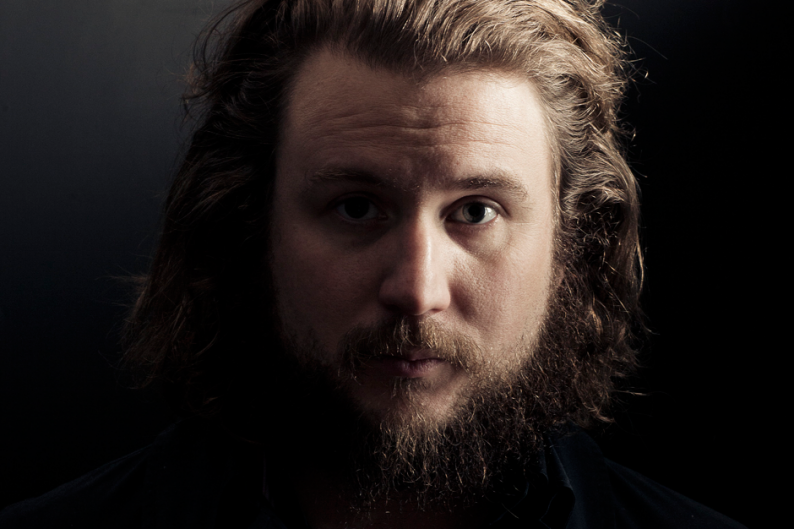
Also Read
Compact Discs: Sound of the Future
Oddly enough, Tupac — who had been dead for five years by that point — takes the cursing crown with 30.86 cussings per song, and Ludacris trailing at 27.21. ‘Pac also wins for the most profane album with 1996’s All Eyez on Me at 33.52 CWPS. Until the End of Time finished at second.
The whole study’s worth a read, just to track the trends. In recent years, use of the N-word and misogynistic terms has dropped, while homophobia is at its third-highest level. Says the author: “Homophobic slurs in rap are on the rise. With lyrically intense underground artists popping up and proving they can be successful in the mainstream, there is no reason to believe this trend will change.” Check out some of the charts below, and take a gander at the full study at Best Ticket.


